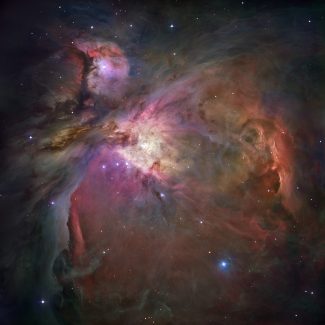Rain Forces Cancellation of Star Party at Observatory
By
Westmont

((For the fourth time in five months, inclement weather has forced the cancellation of the monthly public viewing. We will try again March 18.))
Weather permitting, Westmont’s powerful Keck Telescope will be focused on the Great Nebula in Orion, M42, as part of the free monthly public viewing at the observatory Friday, Feb. 18, at 7 p.m. “This stellar nursery is 1,400 light-years distant and is always a winter treat,” says Tom Whittemore, Westmont physics instructor. The observatory sits between the track and baseball field at Westmont. Free parking is available above the baseball field.
Members of the Santa Barbara Astronomical Unit (SBAU) also bring their telescopes to the event for the public to look through. Westmont and the SBAU hold the free viewings every third Friday of the month. However, inclement weather has forced the cancellation of three of the last four events.
Whittemore, who earned a doctorate from the University of Arizona, says there will also be a variety of open clusters in Canis Major, the Big Dog, and in Gemini, the Twins. “For these kinds of objects the 8-inch refractor telescope, rather than the 24-inch reflector, is the better-viewing instrument,” he says.
Whittemore says for many of these clusters, the color of the stars reveal the different rates of evolution. “The redder stars are born with greater masses and therefore go into their red giant stages sooner.” At that phase, the star has exhausted its hydrogen fuel core. An average-sized star, like the sun, spends the final 10 percent of its life as a red giant.
Whittemore says the open cluster, M35, in Gemini, shows a variety of star colors as does the Double Cluster in Perseus, the Hero. “Rings of red and blue stars pattern these two wonderful clusters,” he says.
A full moon will dominate the sky, posing a giant obstacle. “It rises in Leo and is well up by the viewing, so I’ll try to keep the scopes away from this region of the night sky,” Whittemore says.
Filed under
Campus News, Press Releases